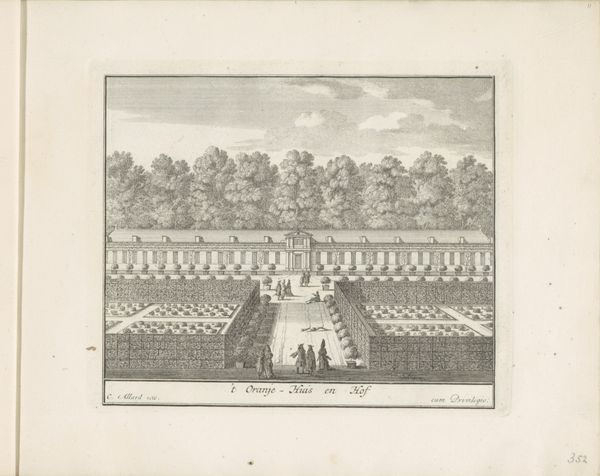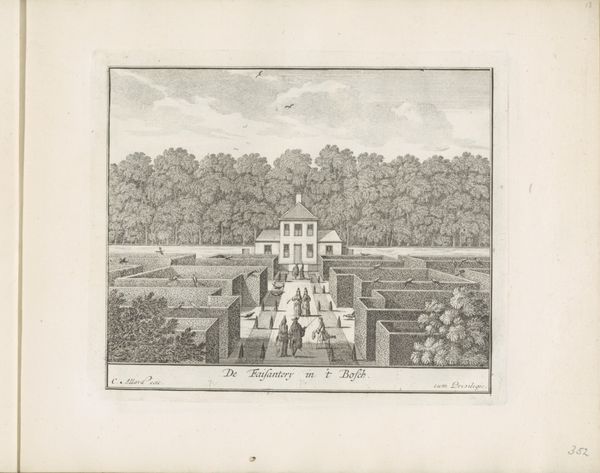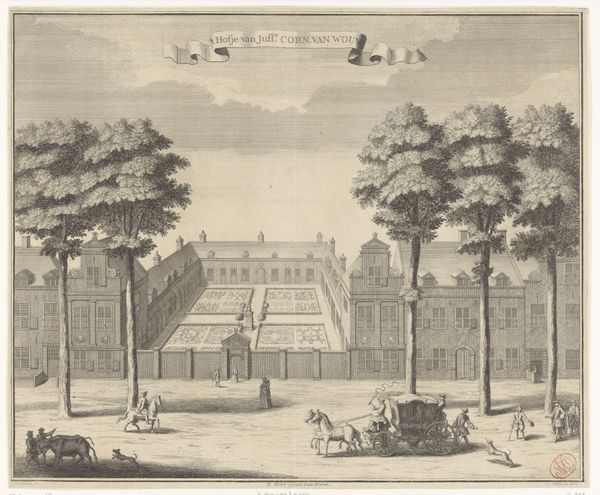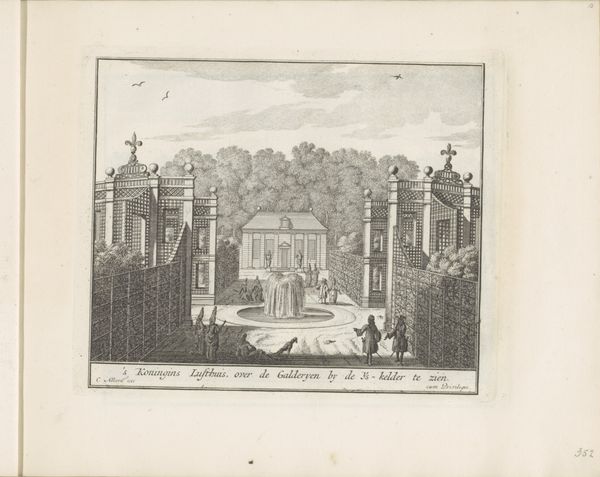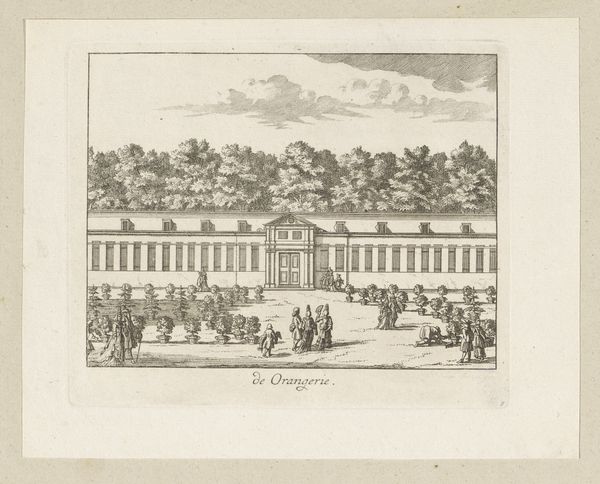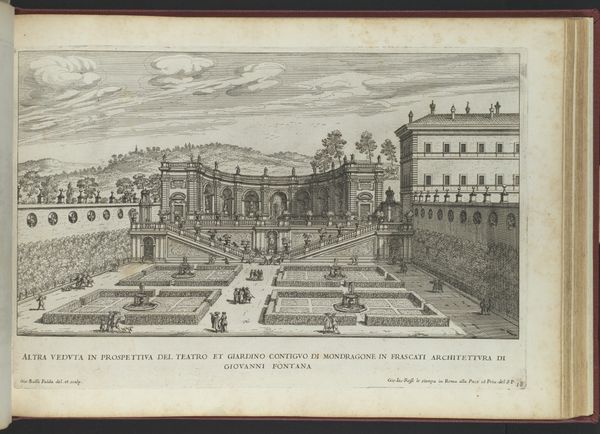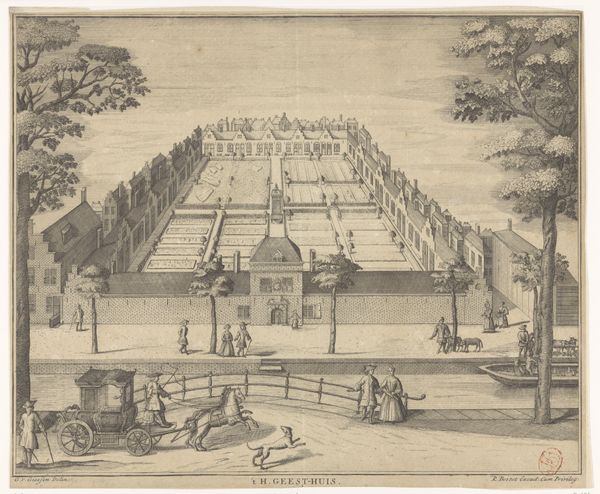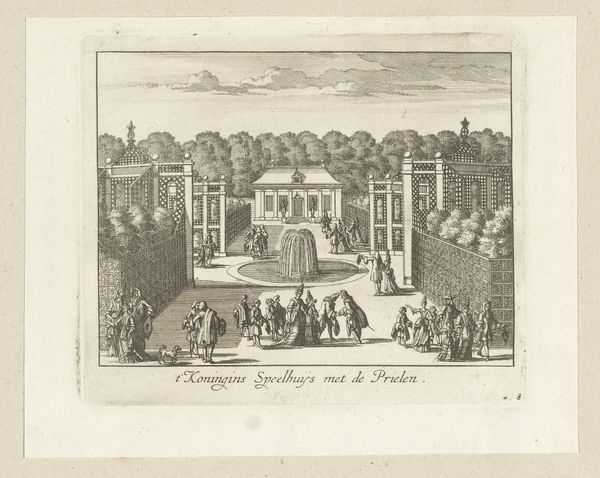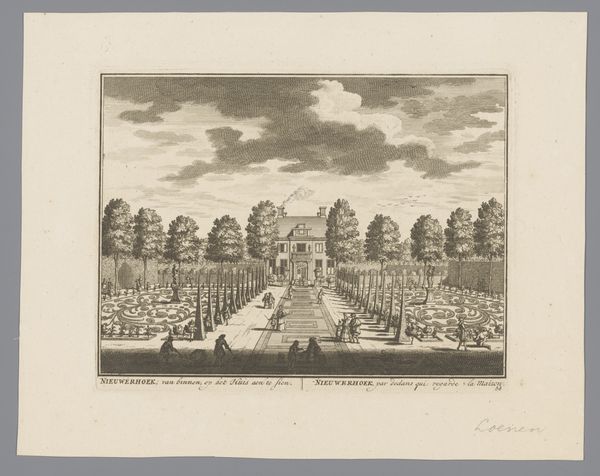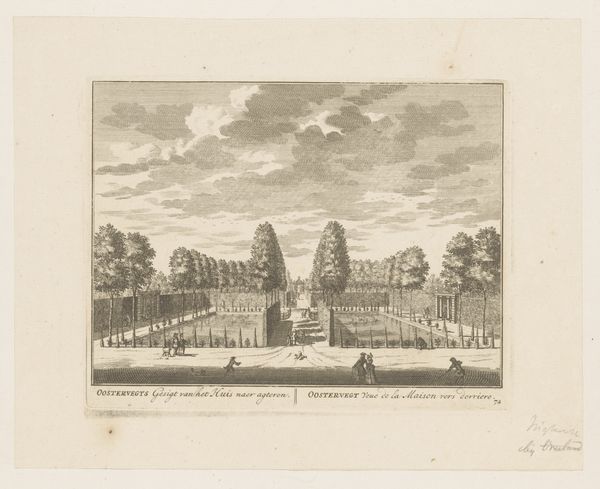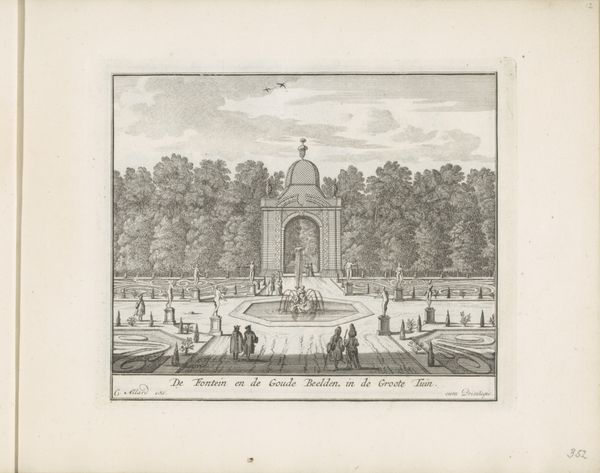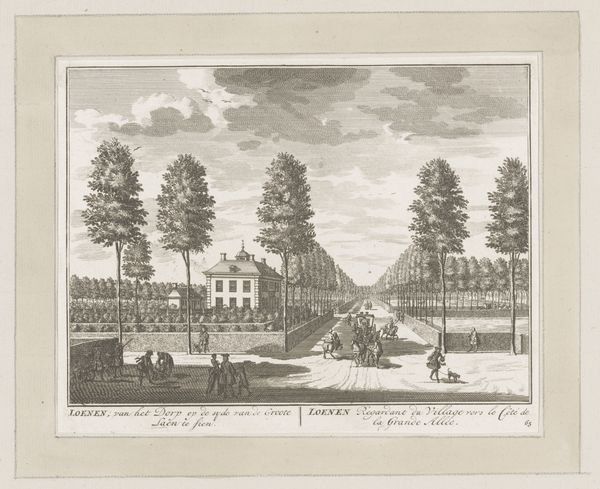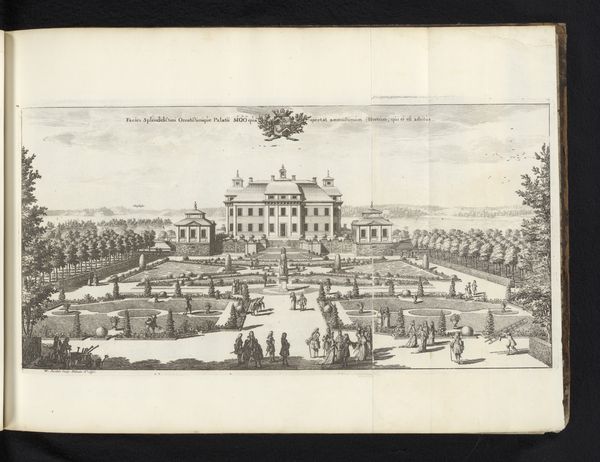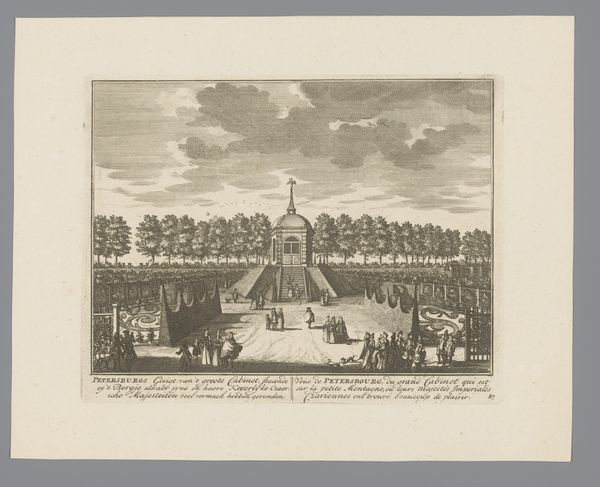
drawing, print, engraving
#
drawing
#
baroque
# print
#
old engraving style
#
landscape
#
engraving
Dimensions: height 170 mm, width 205 mm
Copyright: Rijks Museum: Open Domain
Curator: Look at this print by Carel Allard, dating from 1689 to 1702. It's titled "Galerij in de tuin van Paleis Honselaarsdijk," or "Gallery in the Garden of Honselaarsdijk Palace." It's currently held in the collection of the Rijksmuseum. Editor: It has an almost theatrical quality. The way the building is rendered, with those crisp lines and stark contrast between light and shadow, really emphasizes its monumentality. It feels a little staged. Curator: It is quite structured. Note how the perspective draws the eye directly to the long gallery. The architectural features—the rhythm of the arches, the balanced wings on either side—create a sense of order and control. It’s an engraving, allowing for very precise linework, but there is an unmistakable formal geometry throughout the scene. Editor: Precisely, it is about that very staging. Honselaarsdijk Palace was, in its time, one of the grandest palaces in the Netherlands. Images like these cemented its position, shaping the perception of wealth, taste and power associated with the House of Orange. It’s about creating a particular visual language around Dutch aristocracy, almost propaganda through aesthetics. Curator: Absolutely. And Allard is carefully deploying line and tone. The subtle gradations in the sky contrast the rigid structure below. The texture in the trees adds a welcome organic note to the scene. Editor: Note, though, who populates the scene. Aristocrats at leisure, strolling with their dogs and their expensive clothes on. It really speaks to the culture of display at the time; it isn’t just the palace, but who belongs inside that becomes part of the spectacle. Curator: The human presence certainly amplifies the grandeur. But looking at the technique of Allard, notice the level of detail captured, even in these distant figures. He's managed to instill life and movement within this carefully constructed framework. The engraver’s skill highlights not just wealth and power, but visual expertise. Editor: I agree. Viewing this image today prompts reflection on how places and representations are strategically curated to perpetuate certain social hierarchies, how aesthetics serves purposes that transcend surface beauty. Curator: Indeed, both the sharp formality and quiet dynamism of the lines speak to broader, more important sociohistorical ideas and meanings within this artwork.
Comments
No comments
Be the first to comment and join the conversation on the ultimate creative platform.
